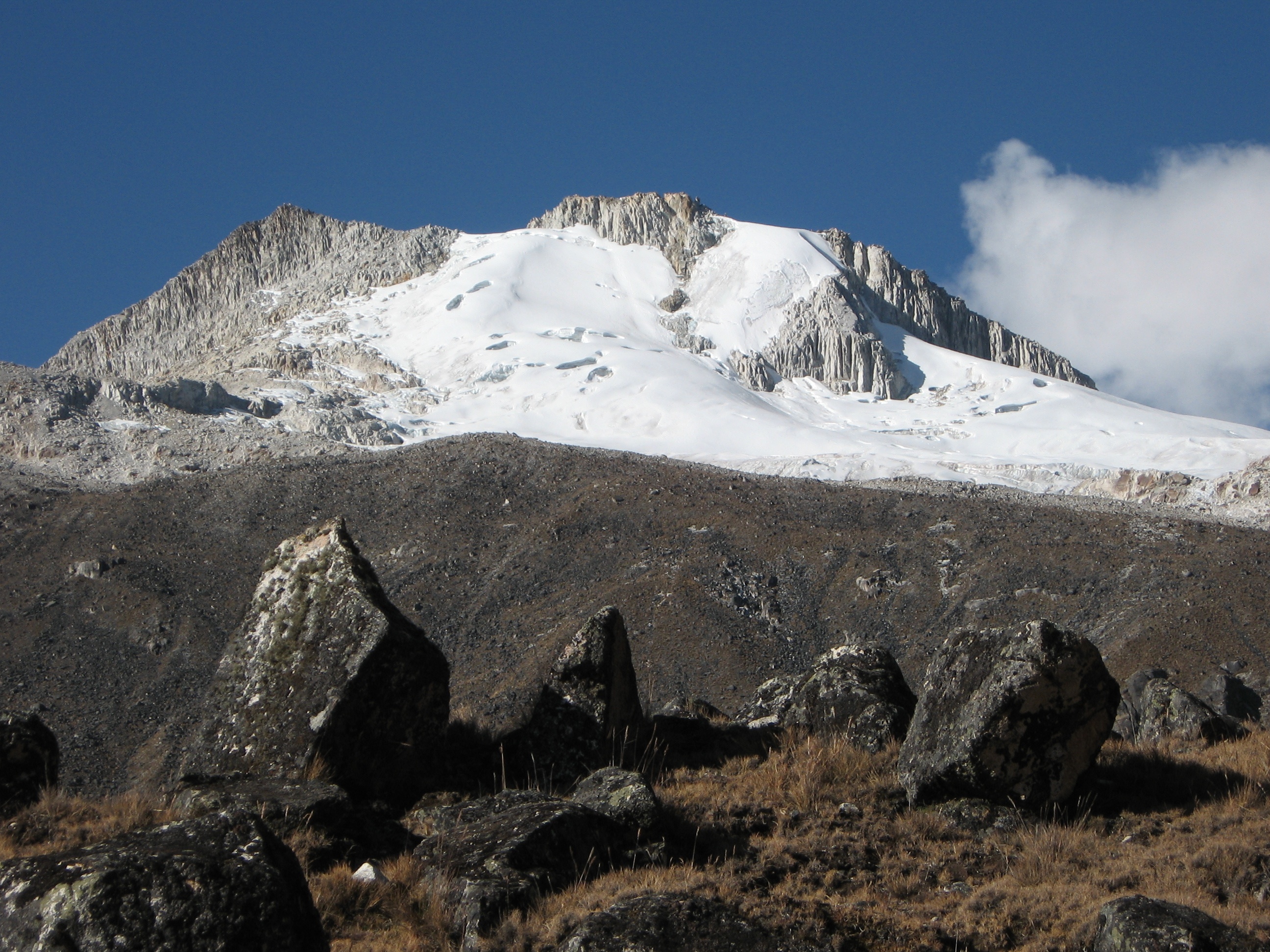Please note: Osher Rainforest will be closed for maintenance May 7-9.
Science News
Tropical Glacier on the Outs
June 9, 2011
by Anne Holden

For decades, climate scientists have studied glaciers to find out how the Earth’s climate has changed over time. Like the proverbial canary in a coal mine, glaciers are excellent predictors of impending changes in global climate. But to date, most research has focused on glaciers in the comparatively cold recesses of the Arctic and Antarctic oceans. How have glaciers closer to the equator grown and shrunk over the centuries? And can these glaciers help predict how climate change will affect tropical environments?
A team of climate scientists, led by Vincent Jomelli from the University of Paris, attempted to answer these questions by studying the history of one such tropical glacier, called Telata. Their results are reported in the June 9 issue of Nature.
The Telata glacier is located in Bolivia, tucked away in the Cordillera Real mountain range near the Bolivian capital of La Paz. This mountain range, while only 17⁰ south of the equator, is covered with glaciers. This is mostly due to its proximity to the Amazon, one of the wettest environments in the world.
Jomelli and his team chose the Telata glacier in large part because it has existed continuously for over 11,000 years. By analyzing samples collected from the glaciers, the researchers could then piece together – without large gaps – how the glacier has changed over time.
The team dated 57 distinct soil deposits, known as moraines, from different parts of glacier. Using these data, they developed a model for how much the Telata glacier’s size has changed over time, and how it will change in the future.
What they uncovered was a glacier whose retreat began about 10,000 years ago, at the beginning of the Holocene period. The arrival of the Holocene is strongly linked to a worldwide warming trend. In Africa, this trend led to increased rainfall in deserts like the Sahara, and may have played a part in the birth of agriculture in the Near East. In South America, the warming trend is linked to a weakening in of the South American Summer Monsoon (SASM) season, causing a decrease in annual rainfall and therefore a reduction in glacier size. Between 11,000 and 8,500 years ago, the Telata glacier lost about one-third of its length. Between 8,500 years ago and about 200 years ago, the glacier went through a series of irregular shrinking events related to global temperature fluctuations.
And then starting 200 years ago, the size of the Telata glacier plummeted. Over the last 200 years, the Telata glacier has shrunk by one-third. It once took over 3,000 years for the glacier to shrink this much. Now it only took 200. The speedy retreat is exemplified in the change in total area of the glacier: 11,000 years ago the Telata glacier took up nearly 450 acres. 200 years ago, the total area had shrunk to about 220 acres. Today, that number has decreased to 40.
Numerous analyses of other glaciers worldwide have shown similar reduction in size linked to global warming. Studies of the Telata glacier by Jomelli and his team provide, for the first time, an understanding of how glaciers residing closer to the tropics have responded to changes in temperature.
Anne Holden, a docent at the California Academy of Sciences, is a PhD trained genetic anthropologist and science writer living in San Francisco.
Image: Brunstein, 2007